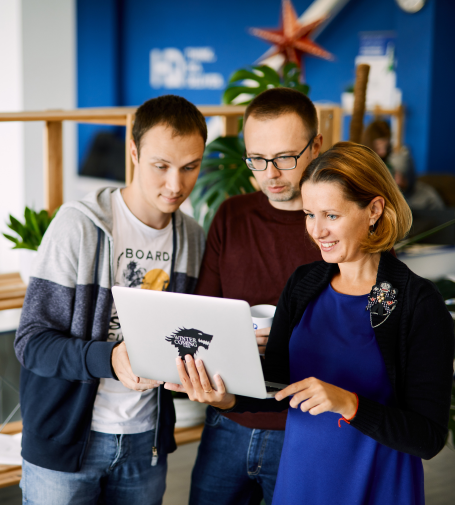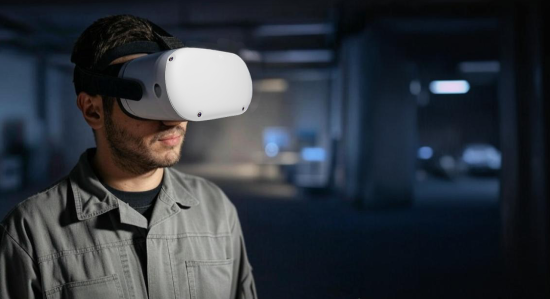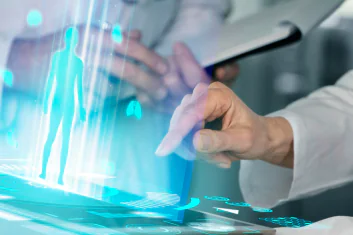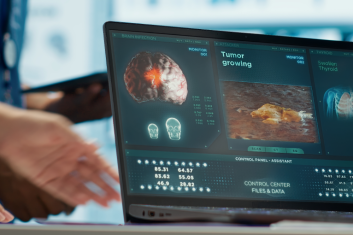In recent decades, the automotive industry has been undergoing revolutionary changes thanks to the development of Virtual Reality (VR) and Augmented Reality (AR). These modern technologies have become an integral part of innovative solutions in both automotive design and development, as well as in driver experience and maintenance.
VR in the automotive industry is used for prototyping, allowing engineers to visualize and test vehicle components in a virtual environment, reducing time and costs. AR in the automotive industry enhances the driving experience by overlaying real-time data, such as navigation and safety information, directly onto the windshield.
Automobile manufacturers such as Hyundai, Ford, Volkswagen, BMW, Volvo, and Audi are eagerly experimenting with AR/VR technology.
Benefits of AR and VR in the Automotive Industry
Enhanced vehicle design and prototyping
With VR/AR, automotive designers and engineers are able to create and test new vehicle concepts and models in a virtual environment before they even hit the production lines. This VR automotive application speeds up the development process, reduces costs and improves the quality of the final product.
Improved vehicle training and maintenance
VR/AR is transforming automotive training and maintenance by enabling mechanics and technicians to train on virtual vehicle models. This immersive approach improves service quality, reduces repair errors, and minimizes risks, leading to more efficient and accurate maintenance processes without the need for physical vehicles during training sessions.
Streamlined training and safety protocols
Automotive VR is used to test automotive systems and components under various conditions and scenarios, including extreme conditions that can be dangerous to humans.This enhances vehicle safety and reduces accident risks. Additionally, VR accelerates development and lowers costs by allowing highly realistic testing in a virtual environment, eliminating the need for numerous physical prototypes.
Enhanced customer experience and sales
The use of VR and AR in cars opens up new opportunities to personalize vehicles and improve the customer experience. Customers can use virtual configurators to create a unique design for their vehicle and preview its virtual model before purchase. This helps to meet individual customer needs and preferences, as well as improve purchase satisfaction.
Applications of AR and VR in Automotive Industry
Virtual prototyping and 3D modeling
VR allows engineers to build and test virtual prototypes of vehicles, saving time and resources. Benefits include:
- Rapid design
- Improved collaboration between teams
- Early identification of design problems
This speeds up the development process and enhances the quality of the final product.
Augmented Reality for assembly line optimization
Augmented Reality in car manufacturing optimizes assembly lines, increasing efficiency and precision in production. Workers receive:
- Real-time, step-by-step instructions
- Visualization of complex components
- Instant access to technical data
The result is fewer errors and faster assembly processes.
VR for employee training and safety simulations
VR training provides a safe environment to prepare employees for a variety of scenarios. Benefits include:
- Hands-on, risk-free training
- Simulation of emergency situations
- Practicing complex technical procedures
This enhances safety and staff proficiency.
AR-assisted maintenance and repair
AR technology is changing automotive maintenance and repair processes. Mechanics use AR glasses to:
- Visualize hidden components
- Receive step-by-step repair instructions
- Identify parts and their specifications
This improves diagnostic accuracy, reduces repair time and minimizes errors.
Virtual Reality for vehicle testing and simulation
Virtual Reality enables comprehensive testing of vehicles in a virtual environment. Engineers can:
- Simulate various road conditions
- Evaluate aerodynamic performance
- Test safety systems
This speeds up the development process, reduces costs and improves vehicle safety.
AR for quality control and inspection
Augmented Reality in the automotive market improves quality control in manufacturing. Inspectors use AR devices to:
- Quickly compare parts to reference models
- Identify deviations and defects
- Automatically document inspection results
This increases inspection accuracy, reduces inspection time and improves overall product quality.
Why You Need a Custom AR/VR Software Solution
-
Tailored solutions for specific manufacturing need
A custom AR/VR software solution from HQSoftware is built to address your unique business requirements. Off-the-shelf solutions often come with limitations, but our tailored approach ensures that every feature, functionality, and design element aligns with your goals, providing a seamless user experience.
-
Future-proof and scalable
With a custom AR/VR solution, you can ensure scalability and future-proofing. As your business grows and technology evolves, your AR/VR platform will adapt with it. HQSoftware develops flexible systems that can easily integrate new features, helping you stay ahead in a rapidly changing market.
-
Competitive advantage
A unique AR/VR experience sets your business apart from the competition. HQSoftware’s custom solutions offer innovative features that are specific to your brand and industry, ensuring that you stand out and deliver exceptional value to your customers while enhancing your digital presence.
-
Expert support and long-term partnership
HQSoftware provides ongoing support and maintenance for your custom AR/VR solution. Our dedicated team works closely with you throughout the development process and beyond, ensuring your system remains efficient, updated, and aligned with your business goals for long-term success.
Key Features of a Custom AR/VR Automotive Solution
High-quality visualizations and simulations
Custom AR/VR solutions offer photorealistic 3D models and immersive simulations, allowing engineers and designers to visualize complex automotive components and systems with unprecedented clarity. This reduces the need for physical prototypes, saving time and resources.
User-friendly interface for engineers and workers
An intuitive interface, tailored for automotive professionals, simplifies workflows and boosts productivity. Designed for various user roles, it ensures ease of use for engineers, technicians, and assembly line workers, reducing training time and increasing efficiency.
Compatibility with multiple devices and platforms
Custom AR/VR automotive solutions seamlessly integrate with various hardware, including headsets, smartphones, and tablets. These solutions are also compatible with major operating systems, ensuring flexibility and accessibility across different work environments — from design studios to factory floors.
Customizable content and modular design
Featuring a modular architecture, custom AR/VR solutions allow for scalable, flexible functionality. Clients can tailor the content and functionality to their specific needs, whether it’s for training purposes, design reviews, or quality control. This flexibility ensures the system grows with your evolving requirements.
Steps to Implementing AR and VR in car manufacturing

Identify use cases
Begin by pinpointing the areas in your car manufacturing process where AR/VR can add the most value. Common use cases include: design and prototyping, training and onboarding workers, quality control and maintenance, etc.Assess technology needs and infrastructure
Evaluate the hardware and software required for implementing AR and VR. Consider high-performance computing systems, VR headsets, AR glasses, sensors, and 3D modeling tools.Collaborate with AR/VR specialists
Work with AR/VR solution providers, developers, and engineers to design tailored applications for your specific manufacturing needs.Pilot testing and prototyping
Implement AR/VR technology on a smaller scale, such as in a specific department or production line. Run pilot projects to test the system’s effectiveness, identify potential issues, and gather feedback from the team.Full deployment and continuous optimization
Once the pilot proves successful, scale up AR/VR usage across different areas of manufacturing. Continuously monitor performance, gather data, and optimize the solutions to ensure the technology delivers long-term value.
Industries We Serve
See what our virtual and augmented reality app developers can do for your business
Education
Simulations of education labs, AR/VR tutorials, virtual trips, recreations of historical scenes.
Manufacturing
Interactive guides to help train employees, test and maintain equipment, build prototypes to evaluate new components.
Marketing
Interactive 3D models of products and holograms equipped with audio, video, buttons.
Healthcare
Safe AR/VR environments for students to learn, AR-based interfaces for medical equipment.
Real estate
Virtual guided tours around buildings with interactive 3D objects superimposed over a physical scene in real time.
Retail
Collection showcasing, virtual dressing rooms, virtual assistants, in-store navigation.
Automotive
AR/VR in the automotive industry enhances vehicle design, manufacturing, and customer experiences by enabling virtual prototyping, immersive training, and interactive car showrooms.
Sports
AR/VR-powered training programs, VR live streaming, Big Data and IoT for unique fan experiences.
Entertainment
Full-presence and immersive experiences for cinemas, TV shows, games, theaters.
Agriculture
Crop monitoring, training, and precision farming, offering immersive visualization, real-time data, and remote assistance.
Tourism
Immersive AR/VR virtual tours of destinations, landmarks, and attractions, enabling travelers to explore and plan trips remotely.
Telecom
AR and VR enhance network management with real-time data overlays for maintenance efficiency, immersive customer service, and employee training in the telecom sector.
How to Start a Virtual Reality Software Project
Easy steps to start a partnership with us
Have no specifications?
Start an elaboration stage with us.
Want a test period?
Let’s start with a pilot project of 2-4 weeks.
Confident and ready to start?
Let’s get your software project running.
FAQs
How do auto companies use VR?
How can a mobile Augmented Reality system assist auto mechanics?
Which cars have Augmented Reality features?
We are open to seeing your business needs and determining the best solution. Complete this form, and receive a free personalized proposal from your dedicated manager.

Sergei Vardomatski
Founder






